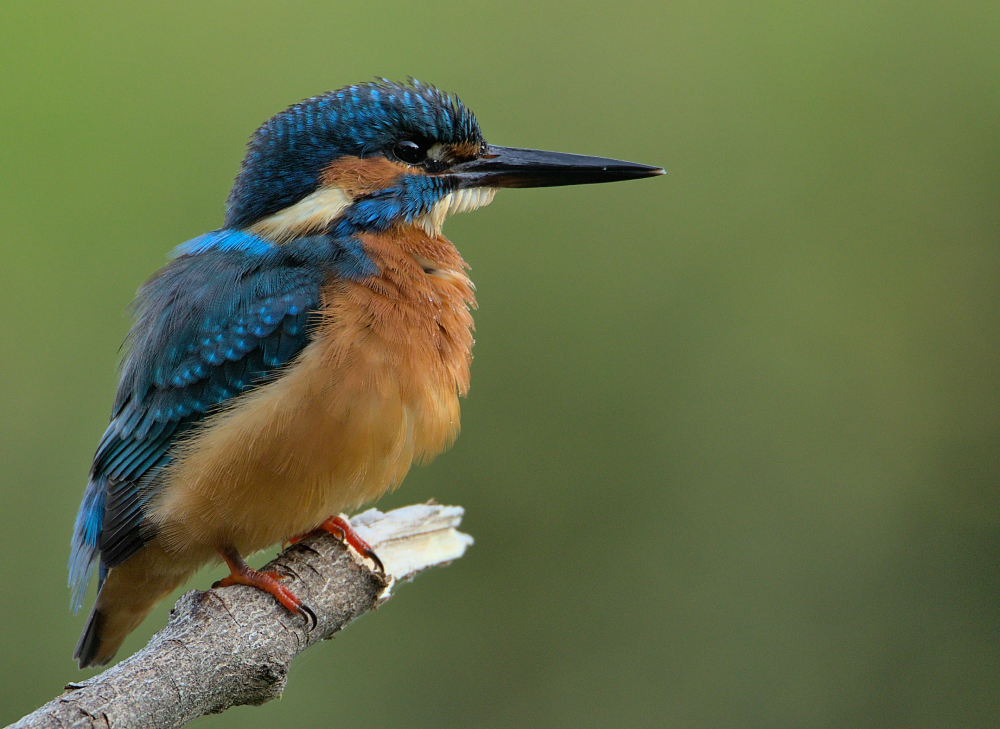In the realm of avian royalty, where vibrant colors meet unparalleled hunting prowess, one species stands out as a gem among jewels—the Eurasian Kingfisher (Alcedo atthis). Revered for its stunning plumage, remarkable fishing abilities, and intriguing behavior, this small but mighty bird captivates the hearts of nature enthusiasts worldwide. Let us embark on a journey into the enchanting world of the Eurasian Kingfisher, exploring its habitat, adaptations, behavior, and conservation efforts dedicated to safeguarding its future.
Anatomy and Appearance
The Eurasian Kingfisher is a masterwork of nature’s palette, adorned with dazzling hues of azure, orange, and white. Its compact body, measuring around 16-17 centimeters in length, is complemented by a long, dagger-like bill perfectly designed for capturing fish with precision. The male sports a vibrant turquoise-blue plumage on its upperparts, while the female exhibits a more subdued greenish-blue tone. Both genders feature a striking orange underside, with a distinctive white throat patch adding to their regal charm.
Habitat and Distribution
Found across Europe, Asia, and North Africa, the Eurasian Kingfisher inhabits a diverse array of aquatic environments, from fast-flowing rivers and streams to tranquil ponds and marshlands. These adaptable birds are particularly fond of clear, shallow waters with ample fish populations, where they can dive and snatch their prey with lightning speed. Despite their widespread distribution, localized populations may face habitat loss and degradation due to human activities such as deforestation, pollution, and habitat fragmentation.

Feeding Behavior
Renowned for their piscivorous diet, Eurasian Kingfishers are expert fishermen, employing a combination of keen eyesight, rapid aerial maneuvers, and precise diving techniques to catch their prey. Perched on overhanging branches or rocks near the water’s edge, they patiently wait for unsuspecting fish to swim within striking distance before plunging headfirst into the water with astonishing agility. Once submerged, they use their specialized bill to grasp their prey before resurfacing to swallow it whole, often returning to their perch to digest and rest between hunting bouts.
Breeding and Courtship
During the breeding season, which typically spans from March to August, Eurasian Kingfishers engage in elaborate courtship displays to attract mates and establish territories. Male kingfishers perform aerial acrobatics, flashing their vibrant plumage and vocalizing with sharp, high-pitched calls to announce their presence and ward off potential rivals. Once a pair bond is formed, the female selects a suitable nesting site, typically a burrow dug into a riverbank or steep embankment, where she lays a clutch of eggs and incubates them for around three weeks. Both parents participate in feeding and caring for the chicks until they fledge and become independent.
Conservation Status and Threats
Despite their widespread distribution, Eurasian Kingfisher populations face various threats that endanger their long-term survival. Habitat degradation, caused by pollution, habitat destruction, and waterway modification, poses a significant risk to these birds, disrupting their foraging grounds and nesting sites. Additionally, climate change, with its associated impacts on water availability and temperature, may further exacerbate these challenges. Conservation efforts aimed at preserving and restoring vital riparian habitats, implementing sustainable land management practices, and raising awareness about the importance of safeguarding freshwater ecosystems are essential for ensuring the Eurasian Kingfisher’s continued existence.
Conclusion
In the intricate tapestry of nature, the Eurasian Kingfisher shines as a symbol of resilience, adaptability, and beauty. From its vibrant plumage to its unparalleled fishing prowess, this remarkable bird continues to inspire awe and wonder among all who encounter it. As stewards of the natural world, it is our collective responsibility to protect and conserve the habitats upon which these magnificent creatures depend, ensuring that future generations may also marvel at the sight of a kingfisher darting gracefully along a sunlit waterway, a living jewel in the crown of creation.









